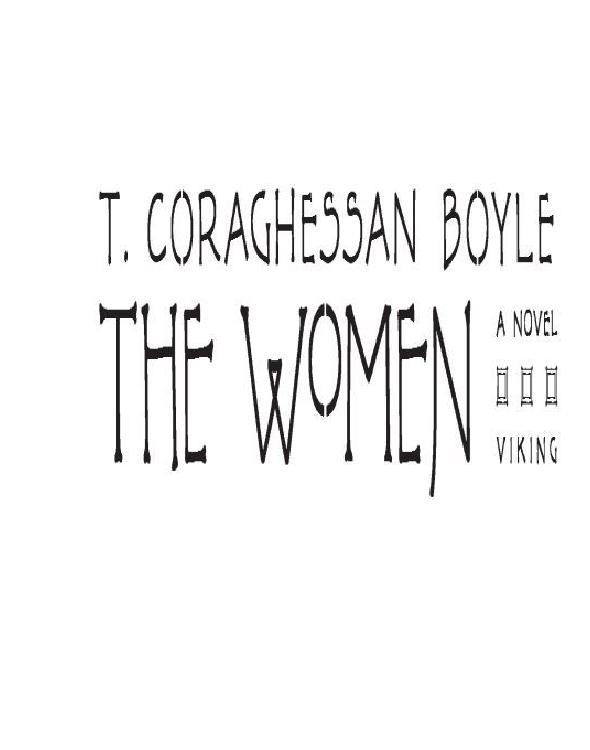
The Women
A Novel
کتاب های مرتبط
- اطلاعات
- نقد و بررسی
- دیدگاه کاربران
نقد و بررسی

Starred review from November 17, 2008
The genius of Frank Lloyd Wright was both magnetic and cruel, as evidenced by the succession of failed marriages and hot-blooded affairs depicted in this biographic reimagining that drills into Wright mythology and the dark shadows of the American dream. The narrative moves backwards in time through the accounts of four women in Wright’s life: Olgivanna, the steely, grounded dancer from Montenegro; Miriam, the drug-addled narcissist from the South; Kitty, the devoted first wife; and Mamah, the beloved and murdered soul mate and intellectual companion. But the novel’s centerpiece is Taliesin, Wright’s Oz-like Wisconsin home. The tragedies that befall Taliesin—fires, brutality—serve as proxy for Wright’s inner turmoil; his deeper stirrings surface only occasionally from behind Boyle’s oft-overbearing depiction of Wright’s women. The most engaging person is Tadashi Sato, the Japanese-American apprentice and narrator who emerges via his frequent footnotes as a complex reflection of “Wrieto-san” and, with his inability to remain objective and his evolving view of Wright and Wright’s image, becomes the book’s most dynamic character. It’s a lush, dense and hyperliterate book—in other words, vintage Boyle.

December 15, 2008
The title of the latest installment in Boyle's ongoing series of novels on famous American egomaniacs refers to the many women in Frank Lloyd Wright's scandal-plagued life. Like John Kellogg and Alfred Kinsey, two of Boyle's earlier subjects, the great architect is contemptuous of society's rules of behavior. He elopes with one wealthy client, Mamah Borthwick Cheney, before divorcing his first wife and strays yet again while married to his second wife. Mamah Cheney, an early feminist, took center stage in Nancy Horan's skillful novel "Loving Frank" (2007). In Boyle's telling, it is the scorned second wife, the slightly faded but still formidable Maude Miriam Noel, who steals the show. Each of the other women gets her due, but there is only one object of lust, and that is the stylish, morphine-popping Miriam. She's a mess, but Boyle clearly loves her, and the reader is richly rewarded. As in all of Boyle's fictional biographies, the lesson is that the charismatic iconoclast is usually a rigid tyrant behind closed doors. This long novel gets off to a slow start but is well worth the effort. Recommended for most fiction collections.Edward B. St. John, Loyola Law Sch. Lib., Los Angeles
Copyright 2008 Library Journal, LLC Used with permission.

Starred review from November 1, 2008
The women who inspired Boyles latest fictional improvisation on the lives of historic figures are the lovers and wives of the master architect Frank Lloyd Wright. While Wrights ambition, ego, and flamboyance are legendary, the passionate women who loved him are known primarily as the victims of lurid scandals and outright horrors. Boyle delves deeply into social and emotional territory to write imaginatively and meaningfully about the operatic drama of Wrights world, an ideal subject for this protean, caring, and wisely satirical writer, whose fascination with zealots and their followers led to his novel about Alfred Kinsey, The Inner Circle (2004), and who happens to live in a famous Wright house. Boyles rendering of Taliesin, the cursed Wisconsin home of Wrights dubious Fellowship, is positively gothic, and for all the swift fury of the plot, this is a character-driven novel in which Boyle empathically portrays Kitty, Wrights first wife and the mother of six of his children; radical and doomed Mamah; mad Miriam; and stalwart Olgivanna. And then theres Boyles piquant narrator, the loyal Wright disciple Tadashi Sato, whose Japanese heritage introduces racism to the story, a theme that reaches fully tragic proportions in Boyles devastating take on the man who killed Mamah and her two children. Boyle is electrifying in thisgorgeouslynovel of artistic conviction, exalted romance, and appalling moral failings.(Reprinted with permission of Booklist, copyright 2008, American Library Association.)

























دیدگاه کاربران